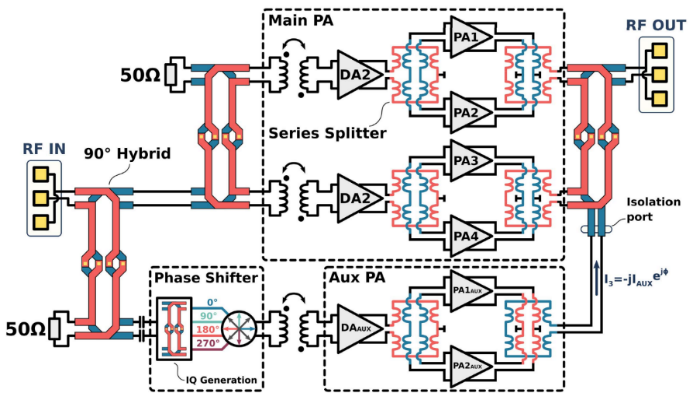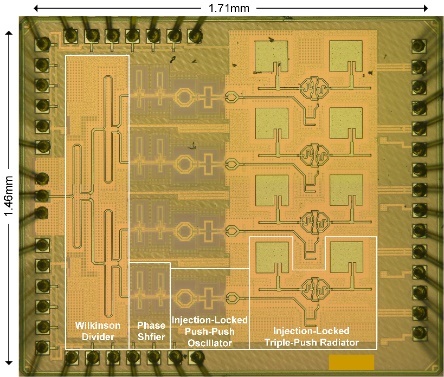
MICAS has a long tradition in the field of RF circuits in general. Whether it is for cellular 5G communication, unlicensed applications, radar, sensing, imaging or future 6G communication, the research in this field is continuing with a wide range of topics. As operating frequencies and -more importantly- bandwidths go up, novel architectures and circuit techniques are needed. Furthermore, the research on RF, mm-Wave and THz circuits is also diversifying with respect to semiconductor technologies. Whereas a strong focus on CMOS has been the mantra of MICAS in the past, today a wide range of technologies, such as GaN, GaAs, InP, FDSOI and Finfet are being used in our research projects for future communication, ranging and sensing applications. This allows us to focus on the best technology for each specific application.

One of the main challenges of future RF circuits is the high bandwidth requirement, combined with low-noise, high linearity and lower power consumption. The trade-off between these requirements is most apparent in the design of power amplifiers. Of course, at mm-wave frequencies, many other circuits such as VCOs, dividers, mixers and LNAs become challenging. Finally, integrated THz circuits in Silicon have the promise to enable THz functionality for a wide range of applications. This requires above-fmax circuit techniques.
MICAS has a strong history and track record when it comes to PA design. This research is now also investigating different technologies, such as GaN, GaAs and InP. High bandwidth and low distortion, especially low AM-PM, are crucial design goals for future 6G systems.

Complete mm-wave front-ends are being investigated, designed and fabricated within the MICAS research group. Challenges such as LO distribution are important, as well as unwanted on-chip coupling between different parts of the front-end circuitry. Our measurement lab is fully equipped to perform modulated measurements in the promising 6G bands at 140GHz and 225GHz
Silicon circuits that operate at THz frequencies have the promise to enable novel applications for sensing, detection and communication. However, Silicon technology speed is limited to an fmax of around 300GHz. As such, the THz range can only be reached by exploiting non-linear circuit techniques since non-linear behavior goes beyond fmax.

 Current research topics
Current research topics